Italian black cabbage Tuscany
In Italy, Calais, or Black Tuscany, has been grown for over 200 years. This vegetable crop has become popular in Europe and America. According to Western nutritionists, Black Palm leaves are an essential component of a healthy diet. Hollywood stars call the plant super nutritious for its record amount of minerals and vitamin composition. Today we will talk in detail about the biological characteristics, useful properties and conditions for growing the variety at home.
The content of the article
Description of Black Tuscany cabbage
Black Tuscany is a vegetable annual plant, an ornamental variety of the headless cabbage of the cruciferous family (Brassicaceae)... Refers to curly (curly-leaved), gardeners call it Cale, Calais, Bruncol, Gruncol. Scientific classification - Brassica oleracea var. sabellica.
The plant does not form a head of cabbage, the nutritional value and decorativeness are precisely curly leaves.
Reference. The ancient Greeks used wild-growing kale in the 4th century BC. e. In the Middle Ages, this culture spread throughout Europe and Asia as the most popular vegetable.
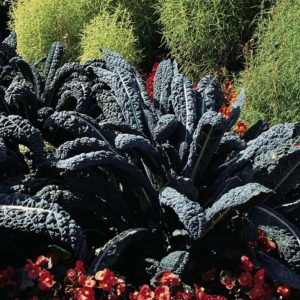
Black Tuscany is the result of Italian selection, the variety is named Nero di Toscana. It has synonymous names for the bizarre shape of dark leaves: Black Palm, Black Tuscan, Calais Palma, Cavalo Nero, Dinosaur cabbage.
In the photo - Black Tuscany cabbage.
Biological features
The stem is dense, strong. The seeds are small, ripen in the second year. The variety is grown more often as an annual. The bush in the form of a palm tree grows more than 1 m in height, the average plant height is 1-1.5 m.
Cirrus leaves-corrugated juicy taste. Straight, oblong in shape, lanceolate, narrowed, pointed. The width of the leaf plate reaches 7-9 cm, the length of the leaves grows to 55-60 cm.
The surface of the leaf plate is bubbly, wrinkled, slightly curled inward. The color is dark green with a black or bluish-smoky tint. Externally, the leaves are similar to savoy cabbage.
Variety characteristics
The variety has a stable high yield - up to 75-80%.
Black Tuscany is not afraid of the cold at all, the seeds germinate at cool autumn or spring temperatures. Retains freshness and useful properties even when the temperature drops to -18 ... -20 ° C.
Reference. The first frosts release sugar, and the taste and texture of the leaves are improved. In regions with a temperate climate, cabbage is not removed from the beds all winter.
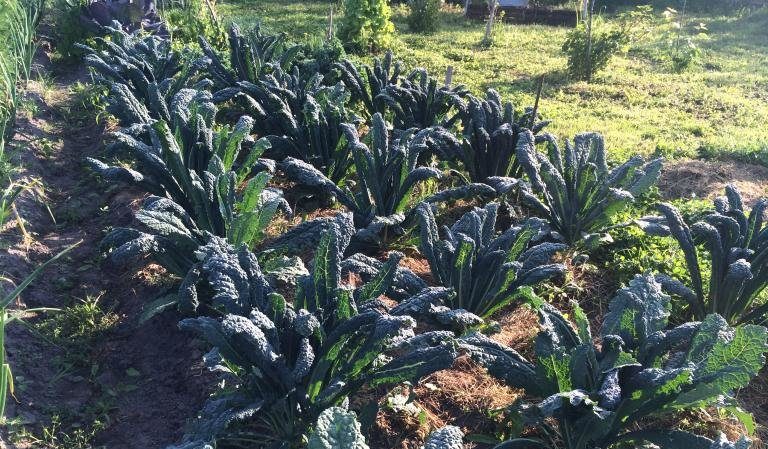
Nutritional value and composition
Cabbage Black Tuscany is a dietary product, in 100 g of fresh leaves there are only 49 kcal. 85% of the vegetable consists of water, there are no alcohol and harmful cholesterol in the composition.
100 g of the edible part contains (fresh or frozen):
- more than 3% protein;
- up to 0.7% fat;
- 8.01% carbohydrates;
- 1.55% ash;
- up to 6% of useful sugar;
- 0.4-0.5% starchy substances;
- more than 2% dietary fiber.
The health of the heart muscle is supported by beneficial fatty acids:
- linolenic - 1.82 g;
- linoleic acid - 1.15 g;
- palmitic - 0.08 g;
- oleic - 0.05 g
The rich vitamin composition ensures the work of vital organs and systems of the body, supports the immune system. Affects metabolism, the condition of the skin, mucous membranes, forms the structure of cells.
100 g of leaves contain:
- up to 240 mcg of vitamin A;
- 0.8 mg choline;
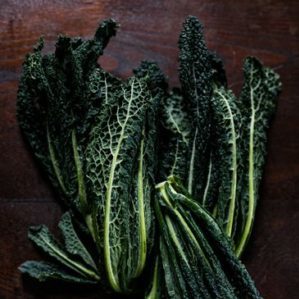
- more than 120 mg of vitamin C;
- 1.55 mg vitamin E;
- up to 400 mcg of vitamin K;
- 0.11 g thiamine (B1);
- 0.12 mg riboflavin (B2);
- more than 1 mg of niacin (B3);
- 0.8-0.9 mg of pantothenic acid (B5);
- 1.25 mg pyridoxine (B6);
- 140 mcg folic acid (B9).
Mineral compounds are essential for biochemical processes in the human body. Micro and macro elements are responsible for the health of bones, teeth, connective tissue; affect the work of the heart, metabolism, hematopoiesis; control blood pressure and water balance.
100 g of Black Tuscany cabbage contains:
- up to 150 mg of calcium;
- 1.7 mg iron;
- up to 50 mg of magnesium;
- 0.67 mg manganese;
- up to 0.95 mg of phosphorus;
- more than 100 mg of potassium;
- 0.91 mcg selenium;
- up to 40 mg sodium;
- 0.5-0.6 mg zinc.
Black Tuscany cabbage contains a complex of essential and nonessential amino acids that provide the formation and transformation of useful protein in the body.
Attention! The product is called "new beef" for its high amino acid complex content. 200 g of vegetables fully replace the required daily share of protein in the body. In terms of calcium content, Black Tuscany leaves compete with whole milk.
The juice and the leaves themselves contain:
- 0.18 g of arginine and valine - are responsible for the brain, provide energy to the body;
- 0.08 g of histidine - participates in the production of proteins;
- more than 0.22 g of isoleucine, lysine and leucine - are responsible for the condition of the heart and blood vessels, reduce blood sugar;
- up to 0.15 g of threonine - prevents fatty liver, supports ligaments, muscles, joints;
- more than 0.3 g of tyrosine and phenylalanine - normalize the functioning of the liver, pancreas, thyroid gland;
- up to 0.3 g of aspartic and glutamic acid - serve as energy sources;
- more than 0.17 g of alanine and glycine - regulate metabolic processes;
- 0.2 g proline - promotes muscle health;
- 0.12-0.14 g of serine and tyrosine - are involved in the formation of enzymes.
Anthocyanins, dietary indoles, xanthophyll carotenoids (lutein and zeaxanthin) found in the aerial part of the Black Tuscany cabbage improve visual acuity, protect against free radicals and ultraviolet radiation.
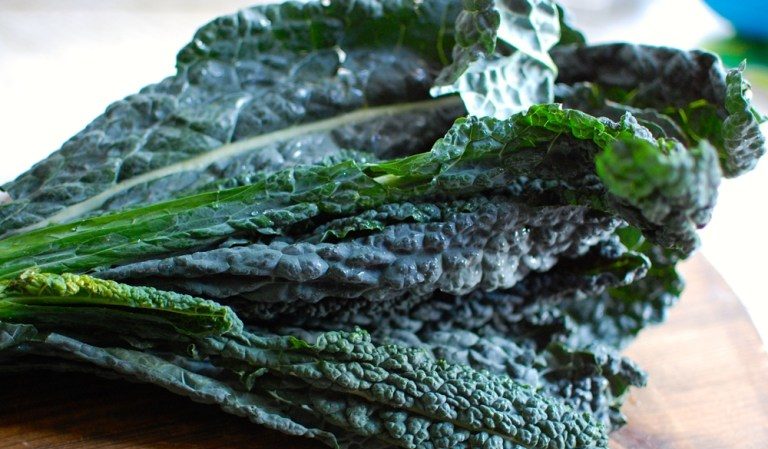
How to store
Black Tuscany can be stored frozen, does not lose its taste and useful substances. Freeze clean, dry, finely chopped leaves, filling in portions in plastic bags. The shelf life of nutrients is up to 3 months.
Attention! The repeated freezing of Black Tuscany is unacceptable, since all the useful composition evaporates.
During steam processing and light roasting, the nutritional value and the amount of minerals, vitamins and useful acids decrease slightly - by 10-15%.
Cooking use
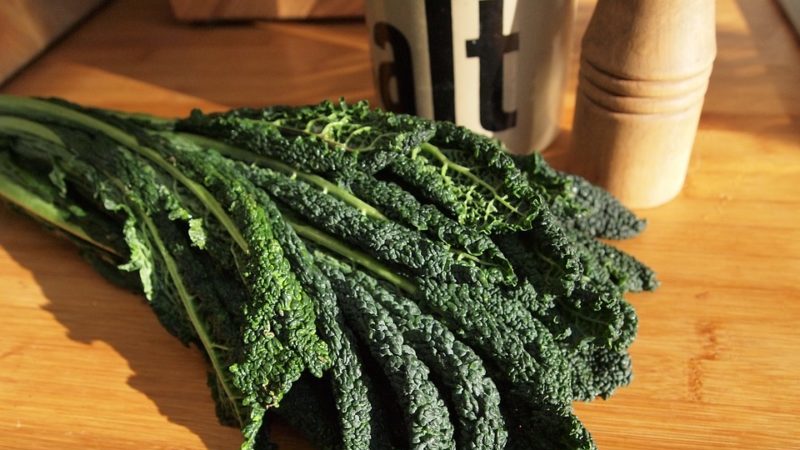
The Black Tuscany variety is popular at home, in Italy, as well as in Europe and Asia.
Leaves are added to first courses and vegetable stews, fried, sautéed, added to fresh salads, vegetable nutritious smoothies and energy cocktails. Smoothies and mixes with the addition of fresh chopped herbs saturate with vitamins and control weight.
In Italy, Ribolitta's signature hearty bread soup is prepared with the addition of carrots, beans and Tuscan kale.
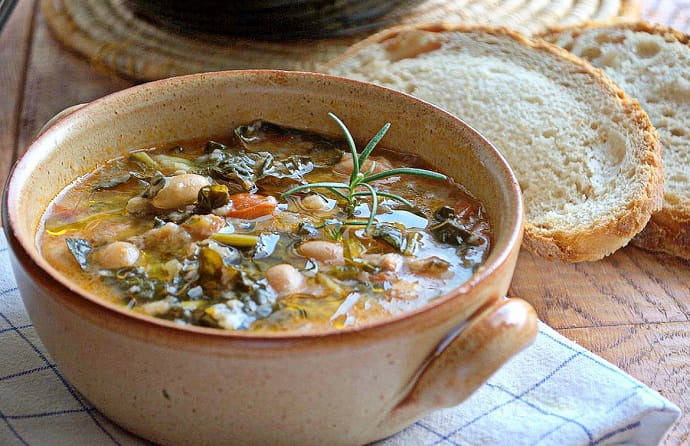

An exotic dish Stumppot is being prepared in the Netherlands: chopped cabbage is added to mashed potatoes, served with meat dishes, fried bacon and smoked sausages.
Stew is also made in Ireland from boiled potatoes and chopped greens. It is traditionally served on Halloween.
Traditional recipe known Portuguese vegetable soup with chopped herbs from Black Tuscany... Also, green leaves are served with spicy sausages.
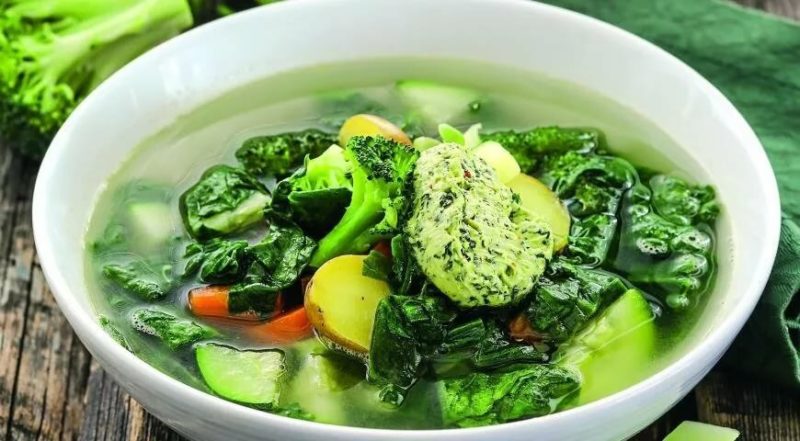
A specific additive is produced in Japan - a concentrate of this cabbage - to the first and second courses.
Soup is made in Turkey with leaves of Black Tuscany.
In northern Germany, Kolwurst is considered a hiking dish for tourists. (lit. - "sausage-cabbage"). It is served to travelers in hotels and tourist centers.
In the western United States (Illinois) Black Palm leaves are used to make flavorful low-calorie chips.

Growing rules
Black Tuscany is an unpretentious plant that grows on any type of soil and in all climatic zones. The variety is grown mainly in open ground, in beds or flower beds as an ornamental culture.
The yield and taste of cabbage depend on the growing conditions.
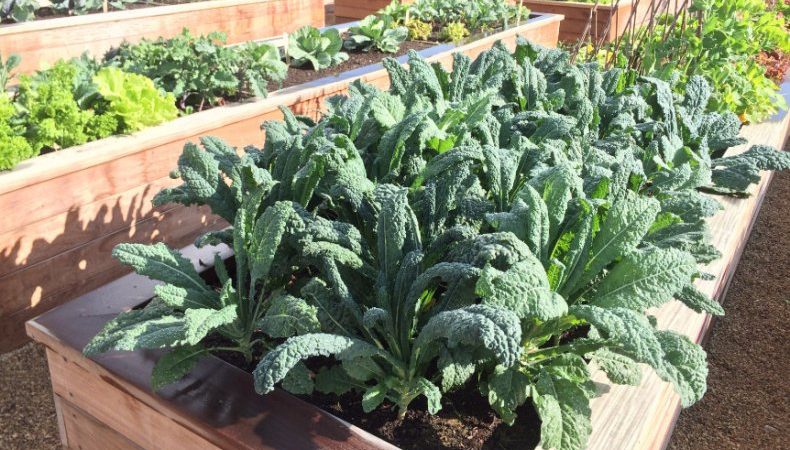
Landing
Seeds are sown directly to the garden in late April. The culture normally tolerates temperatures from + 4 ° C. Re-sowing is carried out in late August or early September.
Reference. Black Tuscany does not like transplanting, therefore, it is not recommended to plant it in seedlings.
Sowing rules: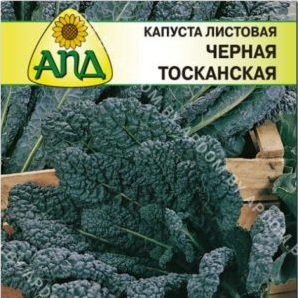
- digging up the garden;
- longitudinal grooves are made;
- spill the ranks with a watering can;
- the seeds are pre-soaked in a growth stimulator ("Epin", "Kornevin", etc.);
- sow sparsely, thin out after germination at a distance of 35-45 cm;
- deepen the seeds by 1-2 cm.
The first shoots appear on the 4th day after sowing. After 7-8 weeks, the leaves are edible. During the season, the bushes are spud 2-3 times, weeds are removed, and the earth is loosened.
Care and basic requirements of Black Tuscany cabbage
For rapid growth and full-fledged formation of an ornamental bush, it is important to observe the agrotechnical preferences of the plant.
Lighting
Saturated green leaves form in open, sunny beds. With sufficient lighting, the bushes stretch up to 1.5 m in height. In the shade, the culture develops more slowly; it is recommended to plant it on the southern and eastern sides of the site.
Soil requirements
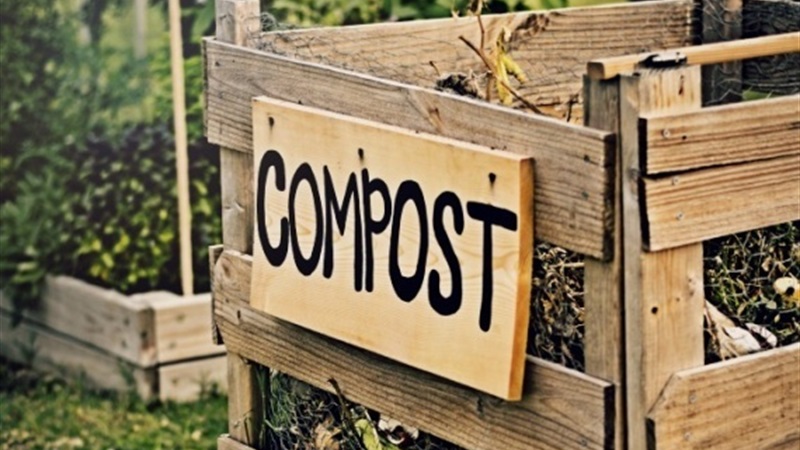
Before planting, nitrogen, phosphorus-potassium fertilizers or organic matter (compost, weakly concentrated manure) are applied.
Important! Ash is preliminarily introduced into acidic soil when digging a site at the rate of 0.5 kg per 1 m². Heavy clay soil is softened with rotted sawdust (0.5 garden bucket per 1 m²).
Cabbage does not require additional feeding. In impoverished soils, mineral complexes are reintroduced through irrigation. Top dressing is carried out 2 weeks after the emergence of sprouts. Urea solution (1 tbsp. L. Per 1 bucket of water) and a weak mullein solution in a ratio of 1:10 are alternated.
It is recommended to plant Black Tuscany cabbage after:
Watering
Regular moistening of the soil is recommended, especially in summer heat. Water the cabbage under the root 2 times a week with clean, settled water at room temperature. To maintain moisture, the beds are mulched with dry grass, sawdust or straw.
Read also:
Harvest time
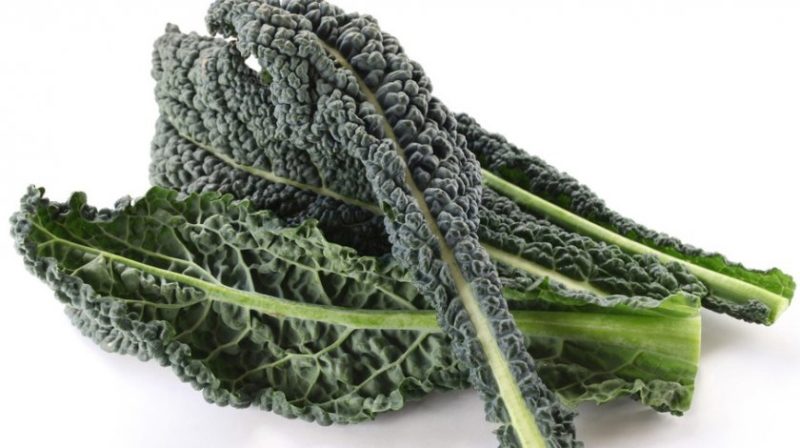
Black cabbage ripens in 1.5-2 months. For homemade preparations, the lower leaves are cut, for salads and first courses - young leaves.
Important! It is recommended to cut the leaves in the early morning, at which time they are as juicy as possible.
Young greens go well with green onion feathers, young garlic, tomatoes and cucumbers. In place of the cut, new greens are tied.
Conclusion
Cabbage Black Tuscany will not only decorate the garden, front garden, flower garden, but also provide the body with valuable minerals and vitamins. The leaves remain fresh and juicy after a cold snap, and can be cut off even after snow falls. The plant is not capricious and unpretentious, it grows and develops rapidly even in impoverished and alkaline soils. A minimum of light, fertilizers, moisture - and the desired vegetable in the garden smells fragrant throughout the season.
It is perfectly stored in the freezer, does not lose taste, color and benefits after short-term heat treatment. The dietary product has no age restrictions and contraindications. It is recommended to be consumed fresh for children, pregnant women, included in the diet for athletes, people suffering from anemia, diabetes mellitus and various pathologies of the digestive system.